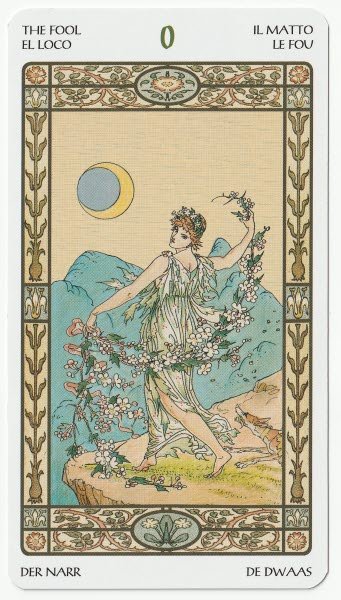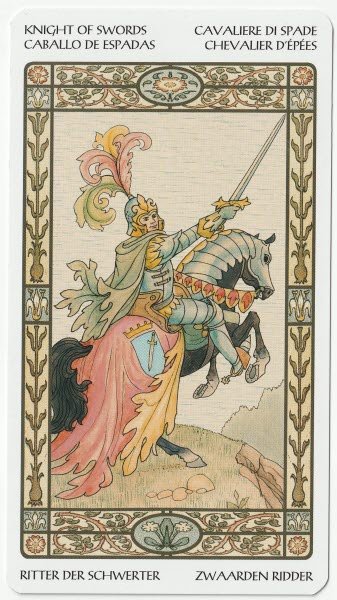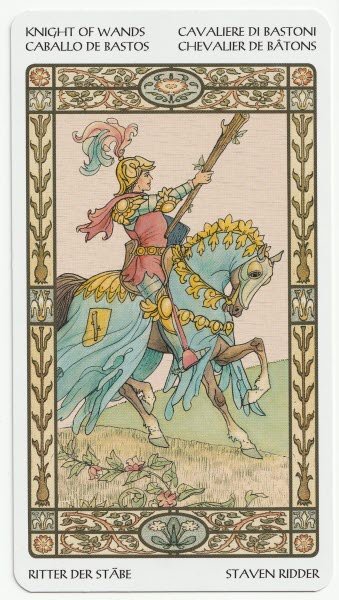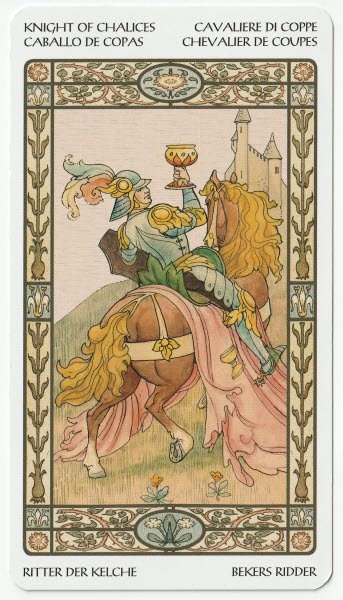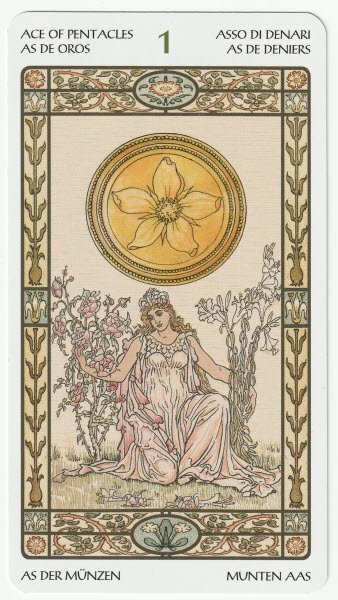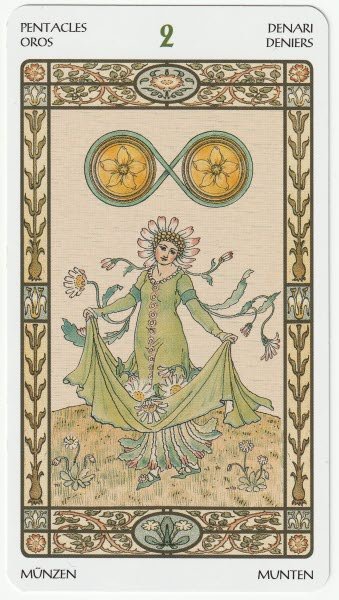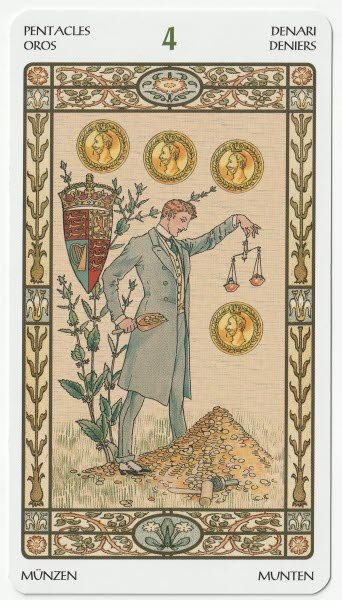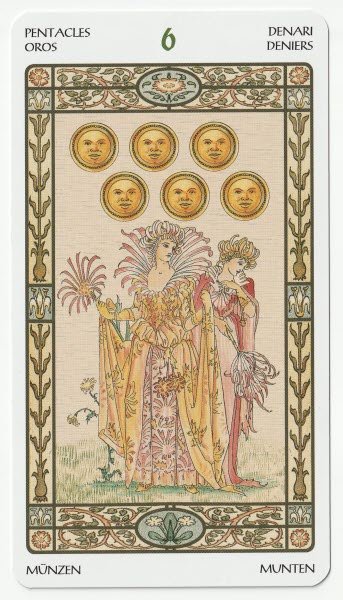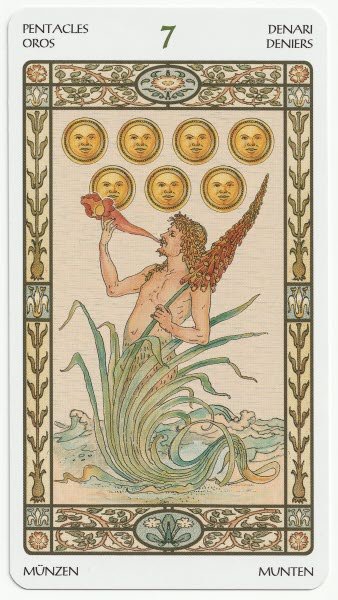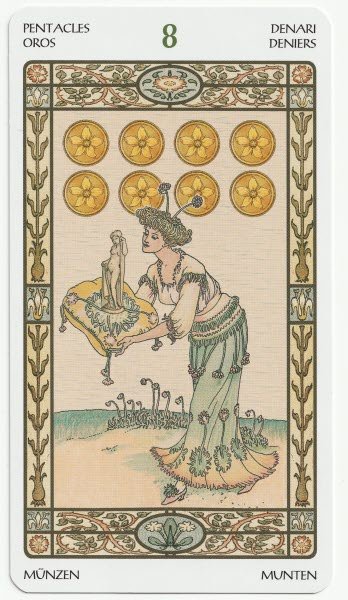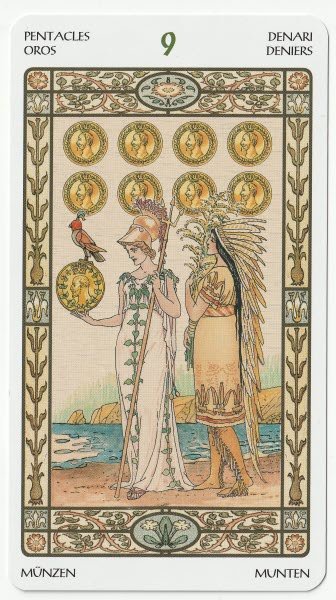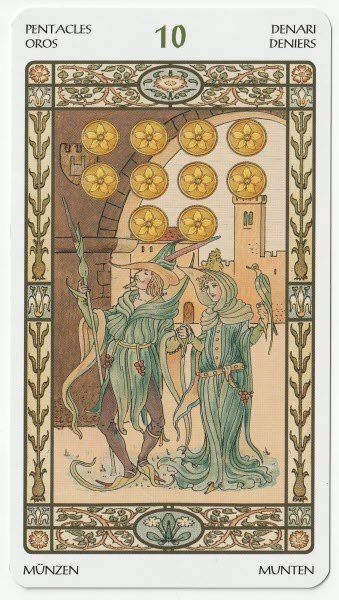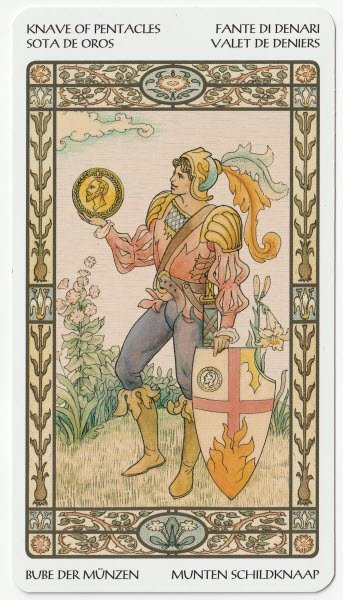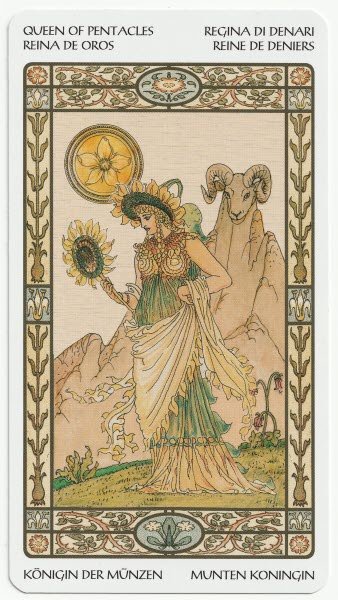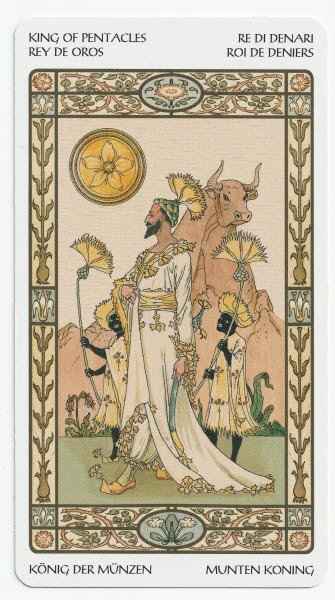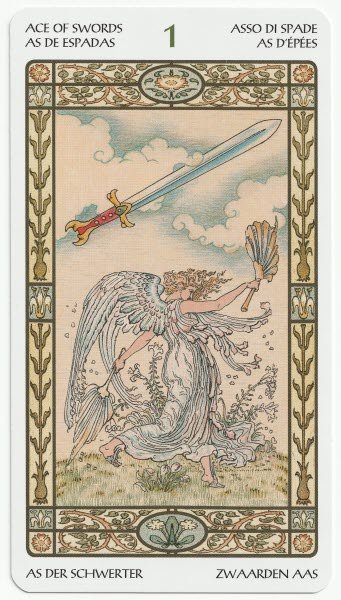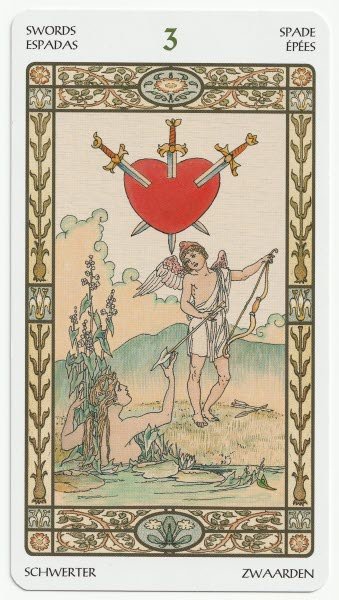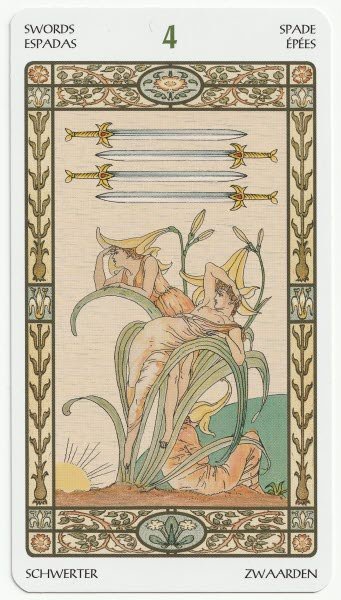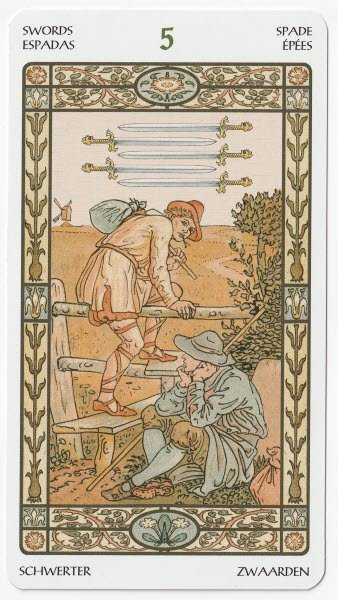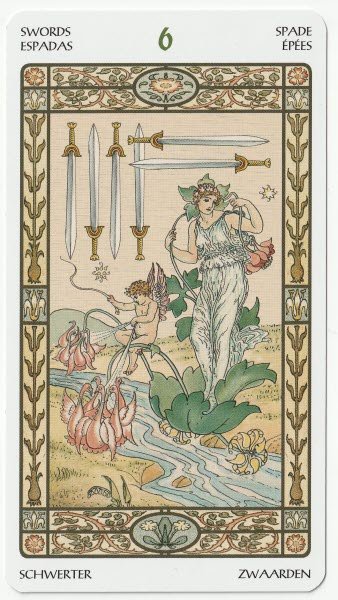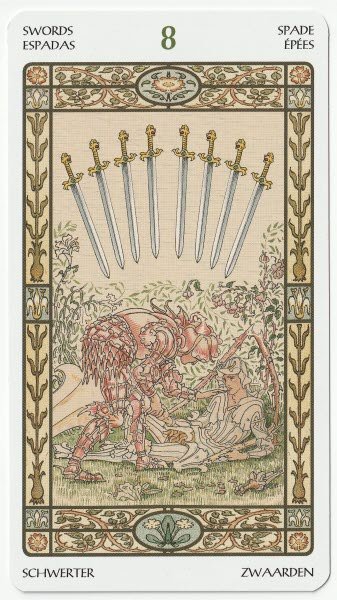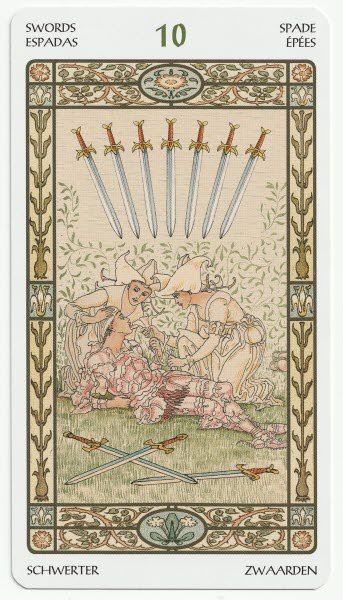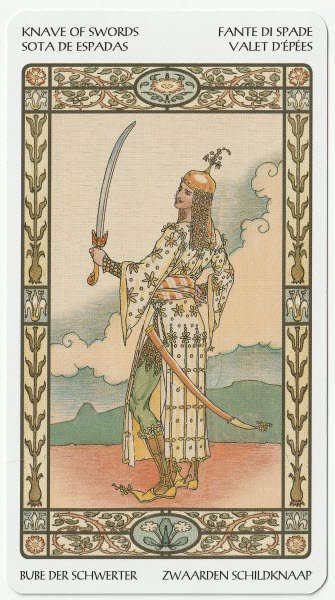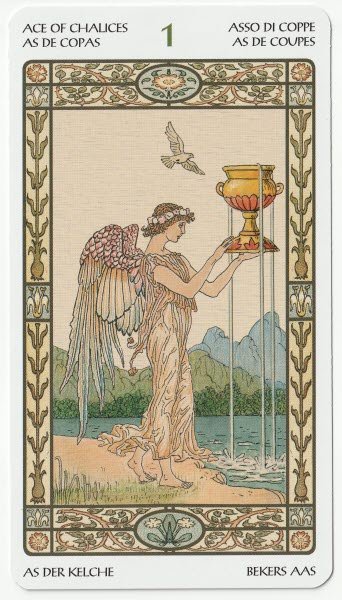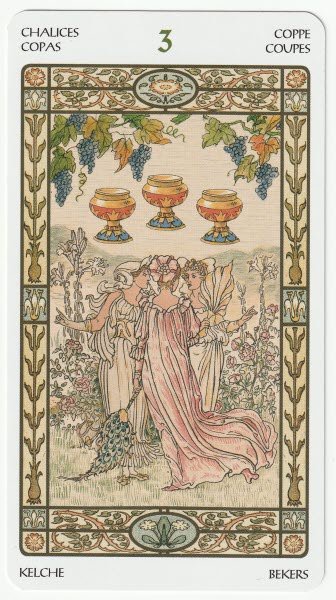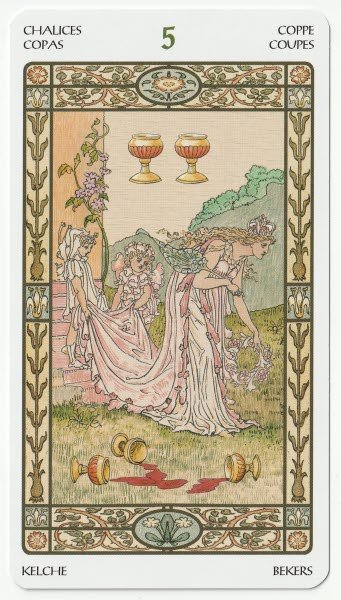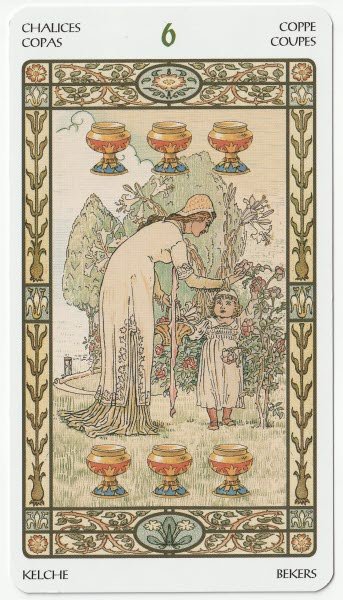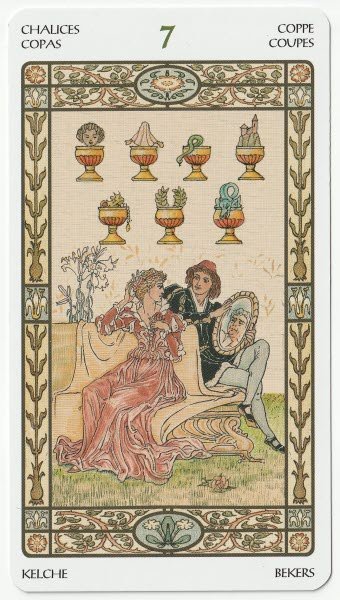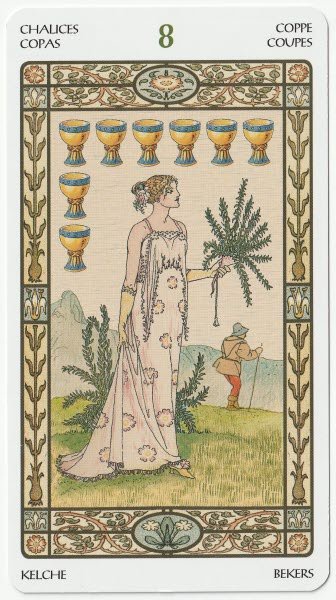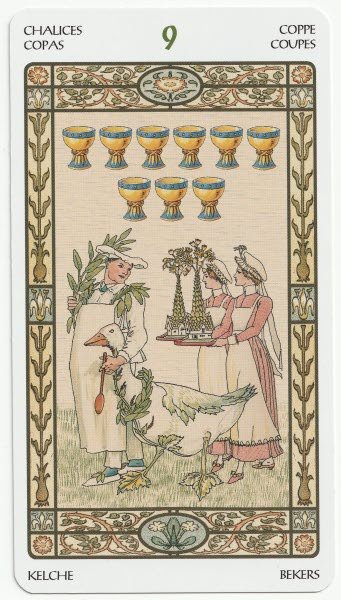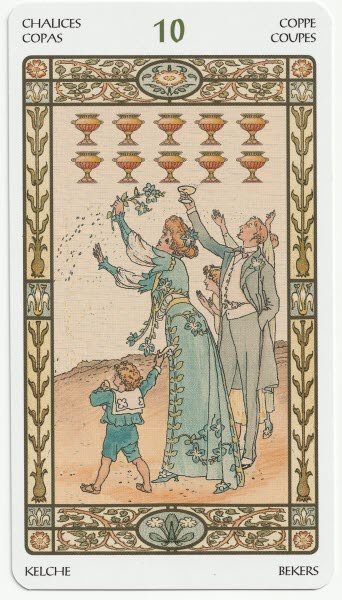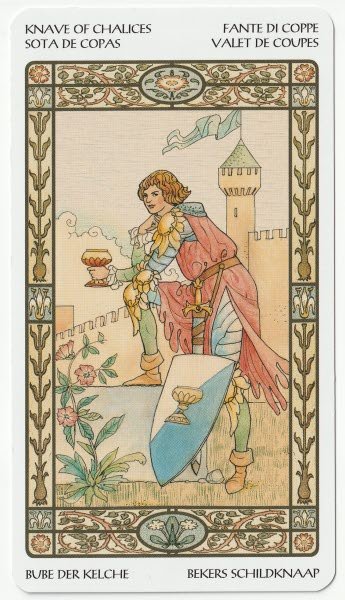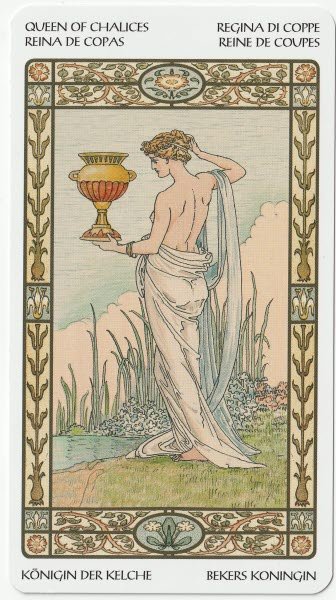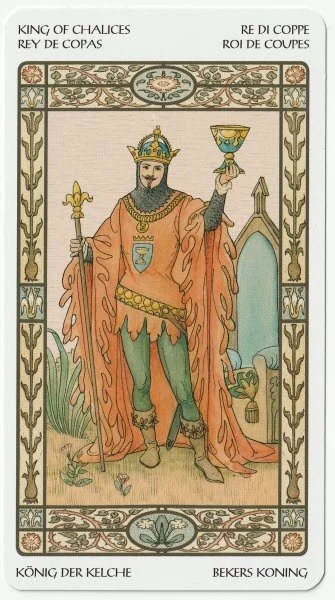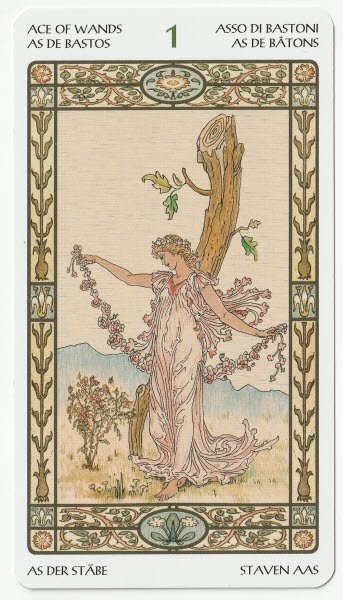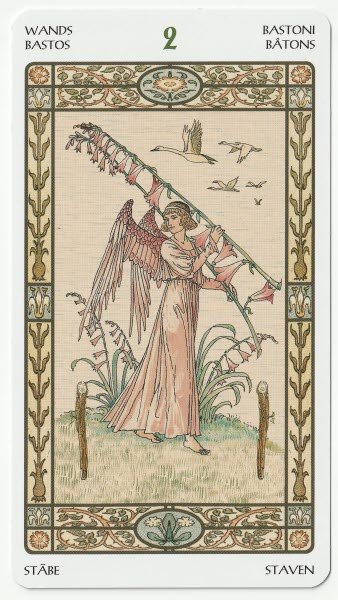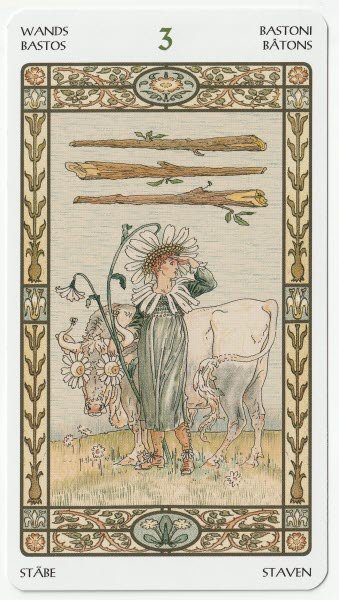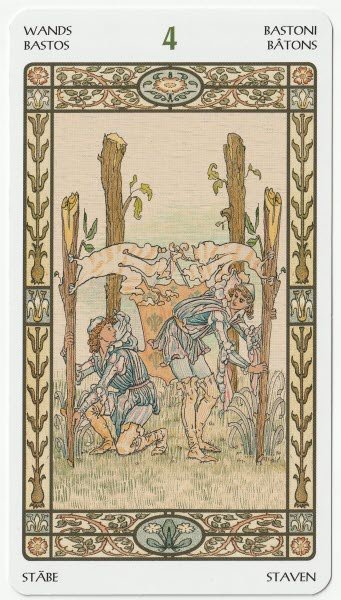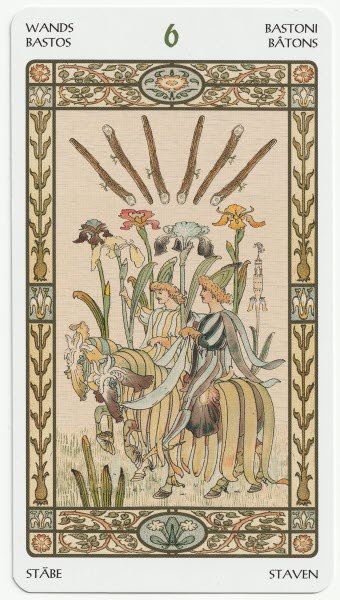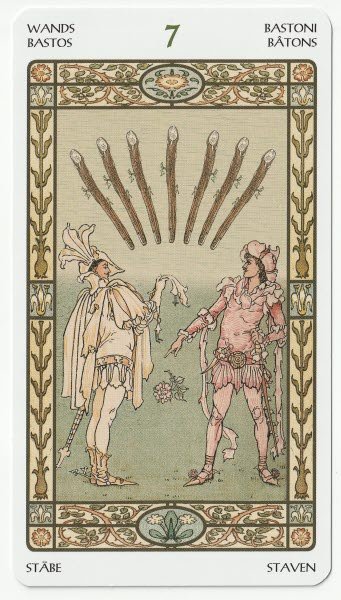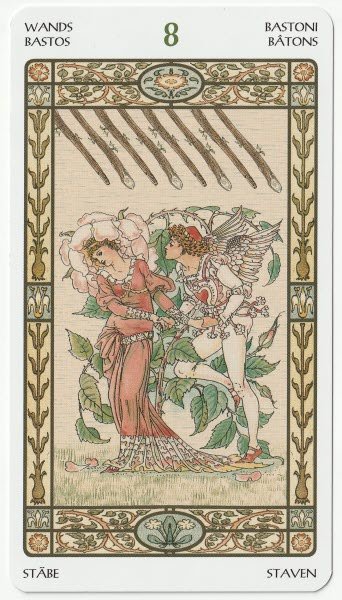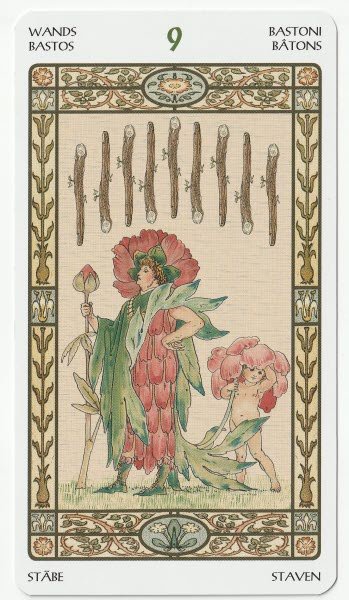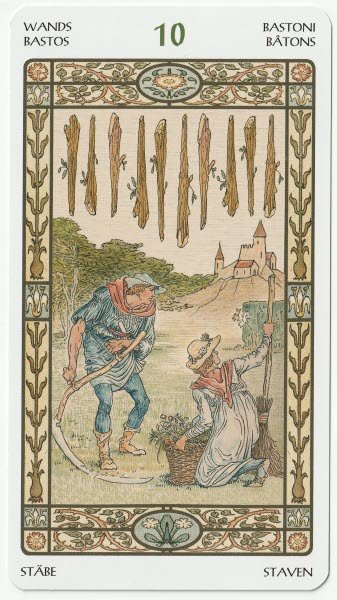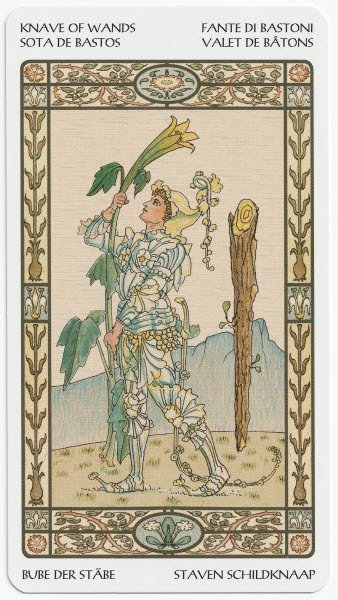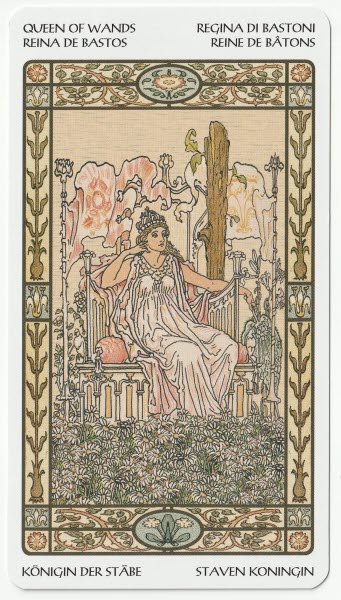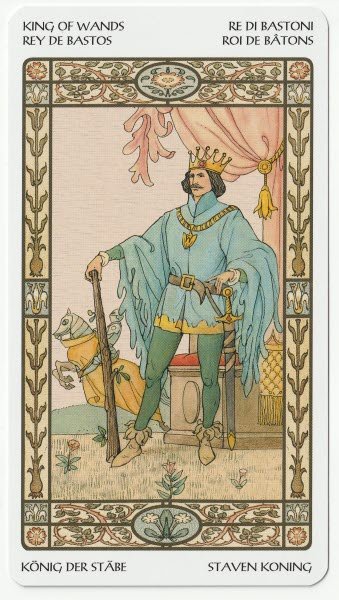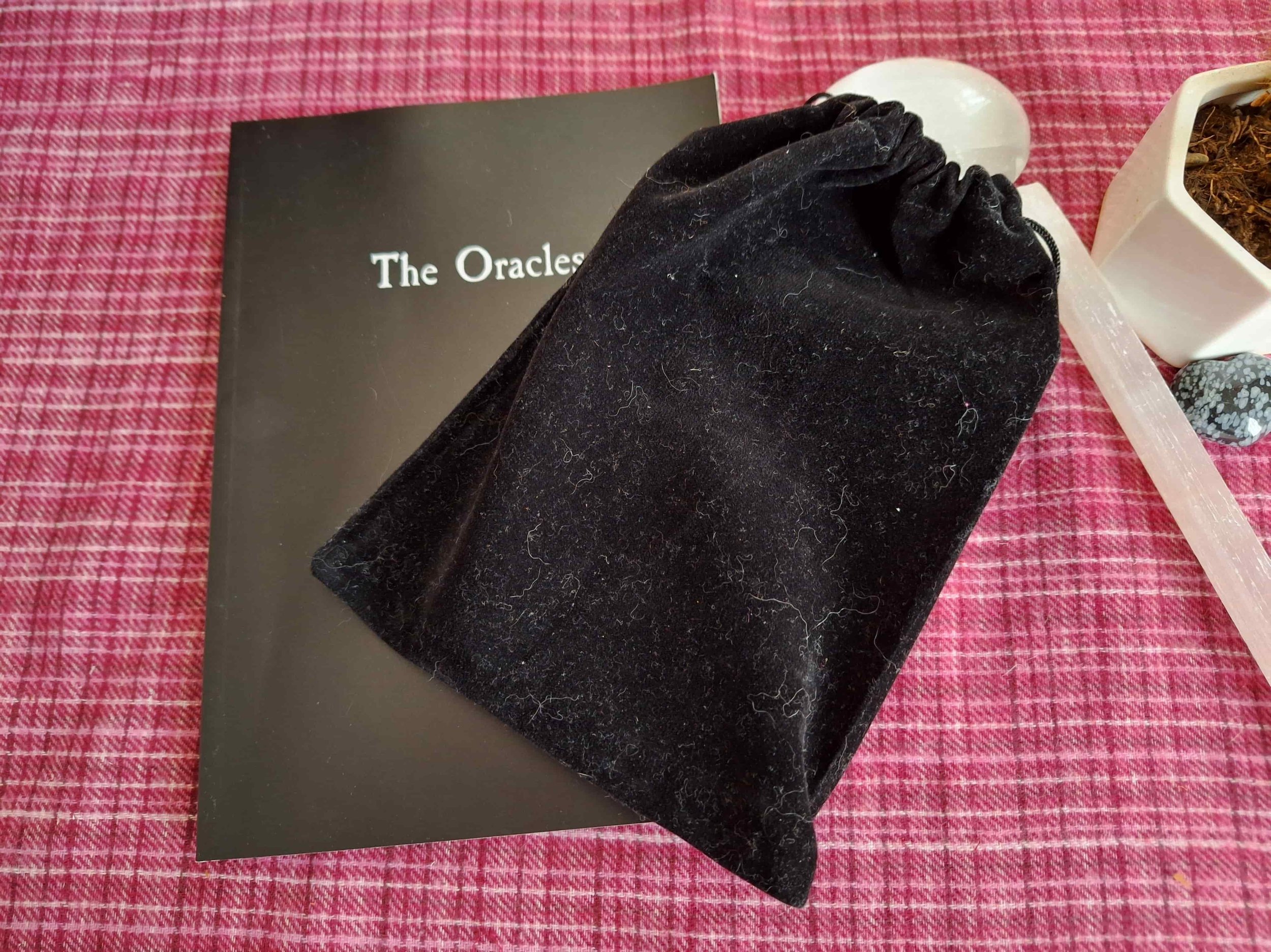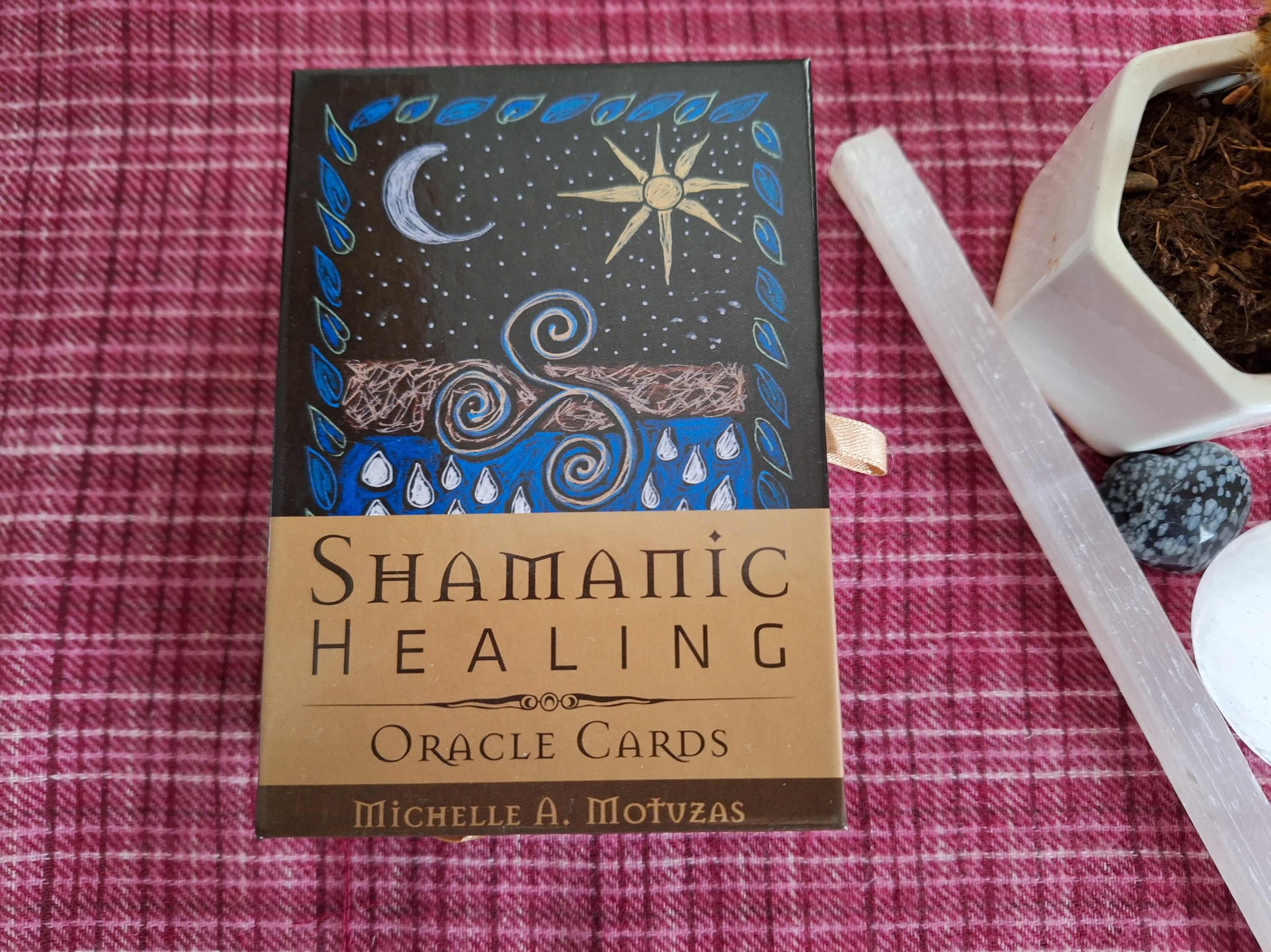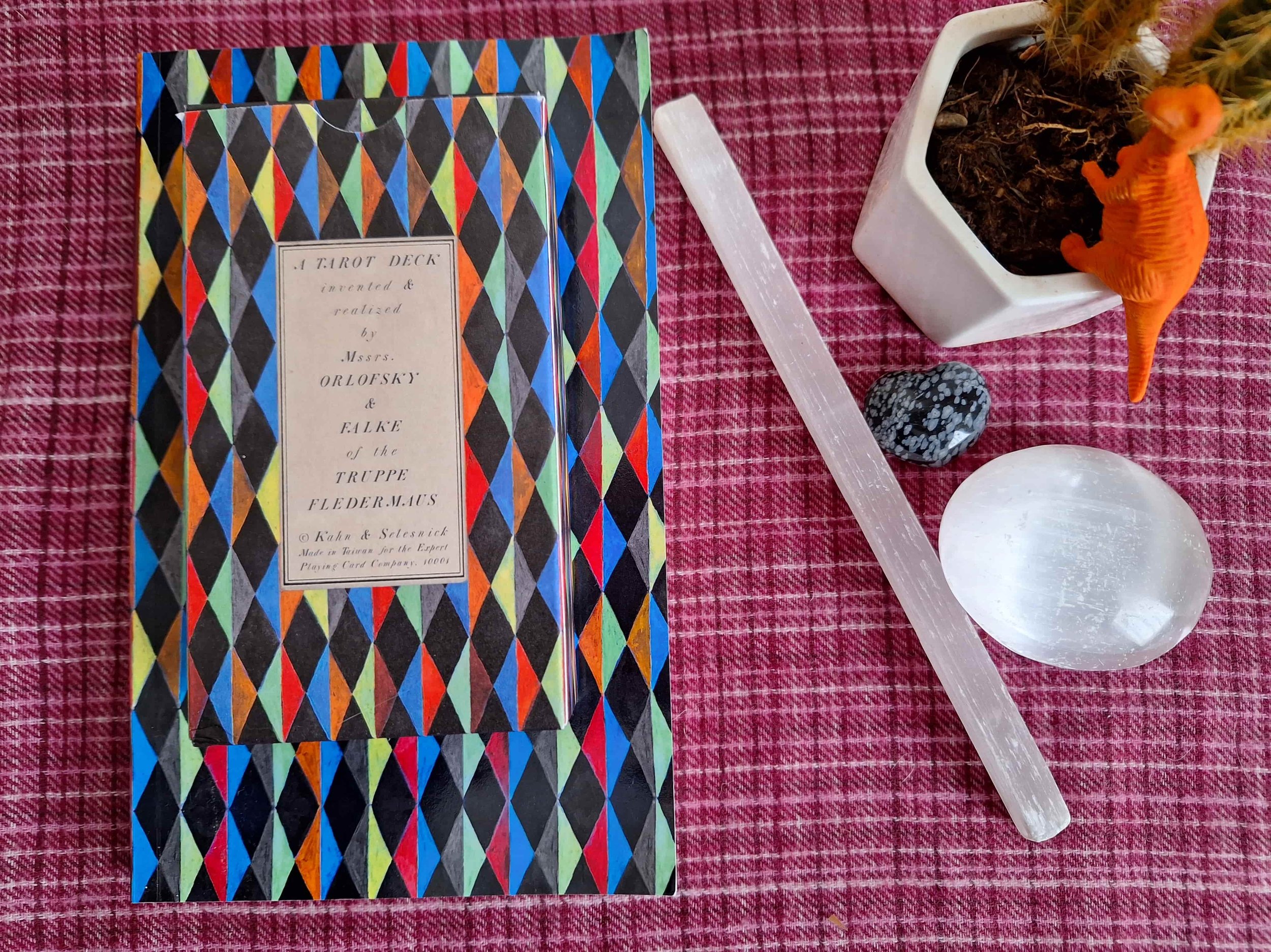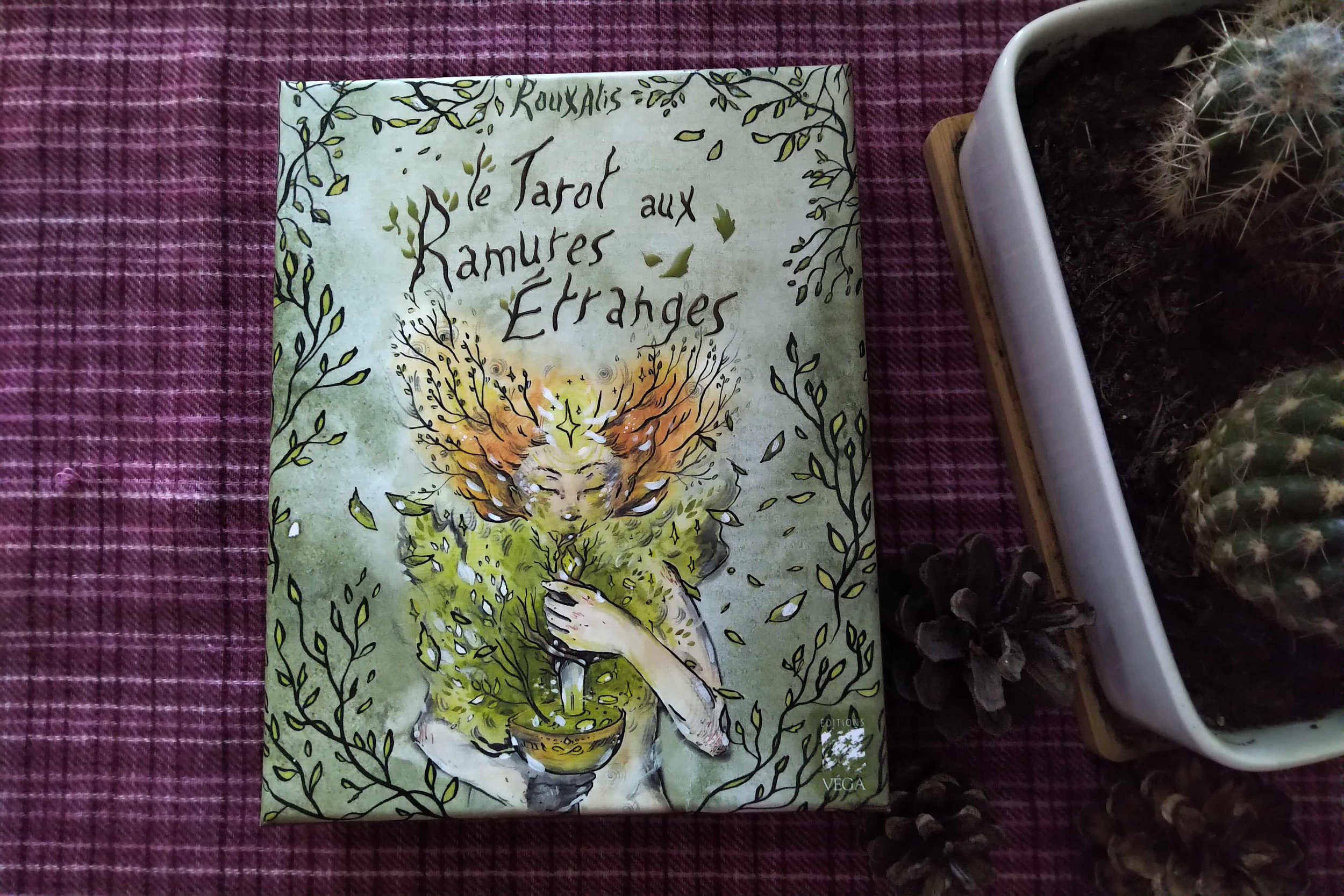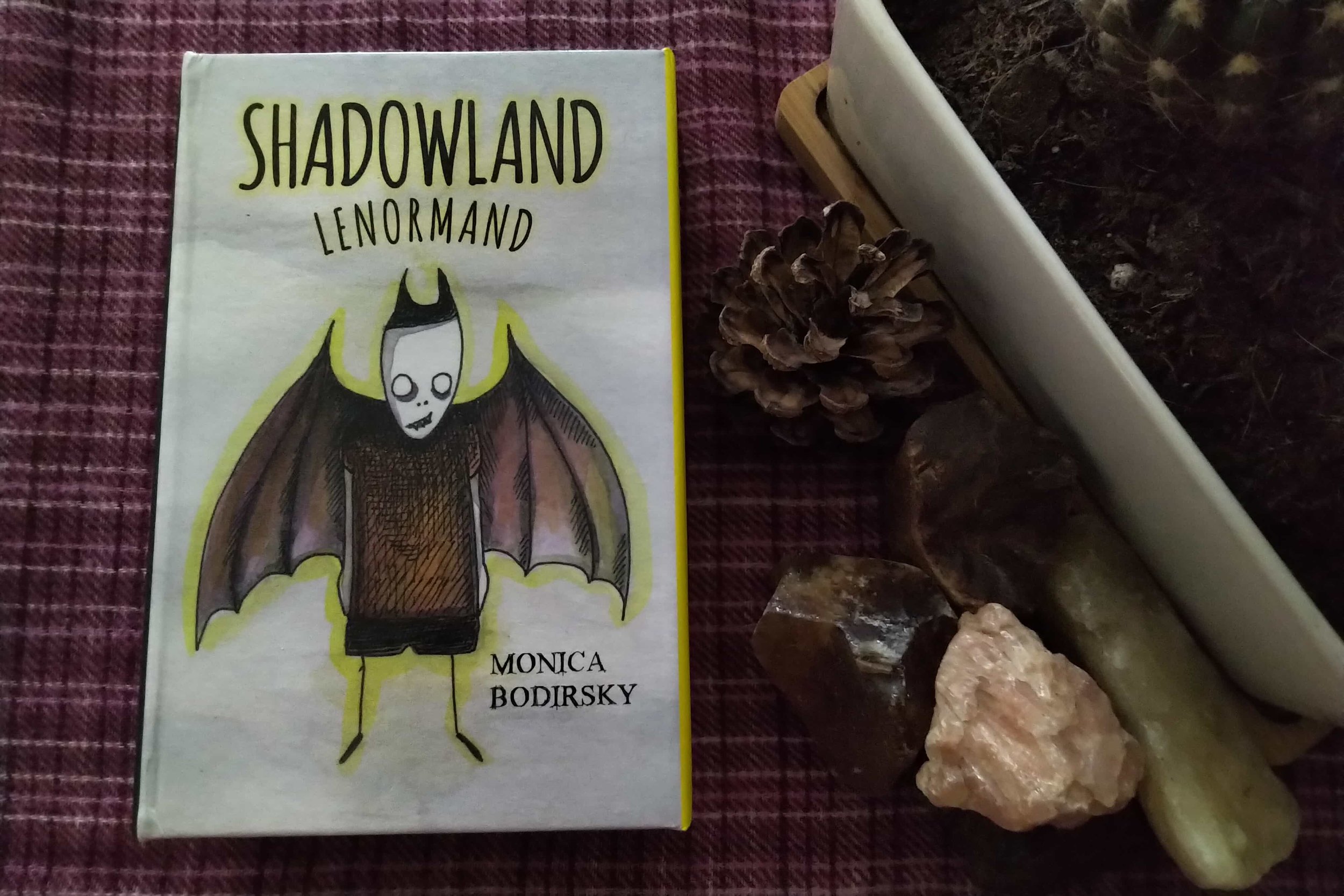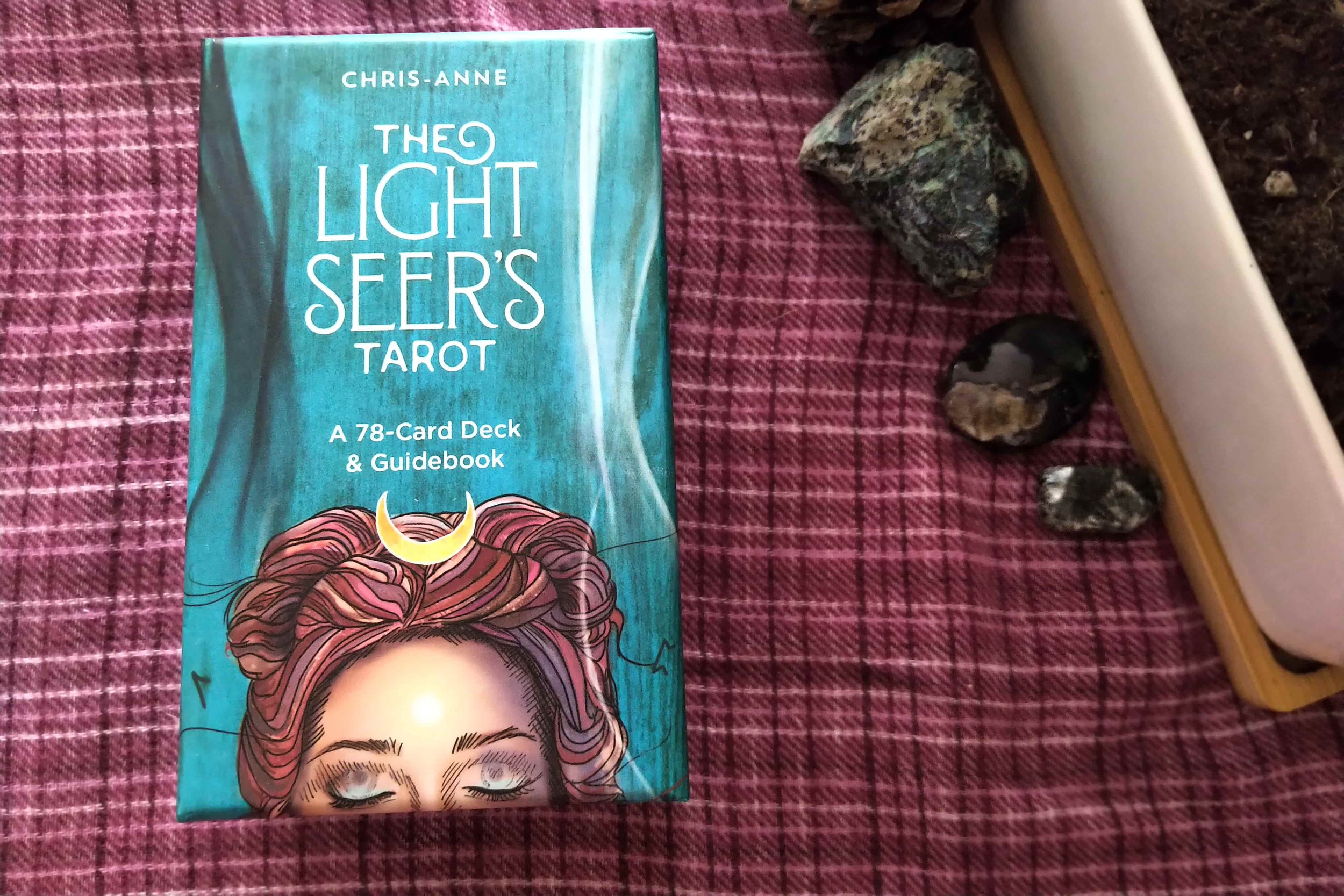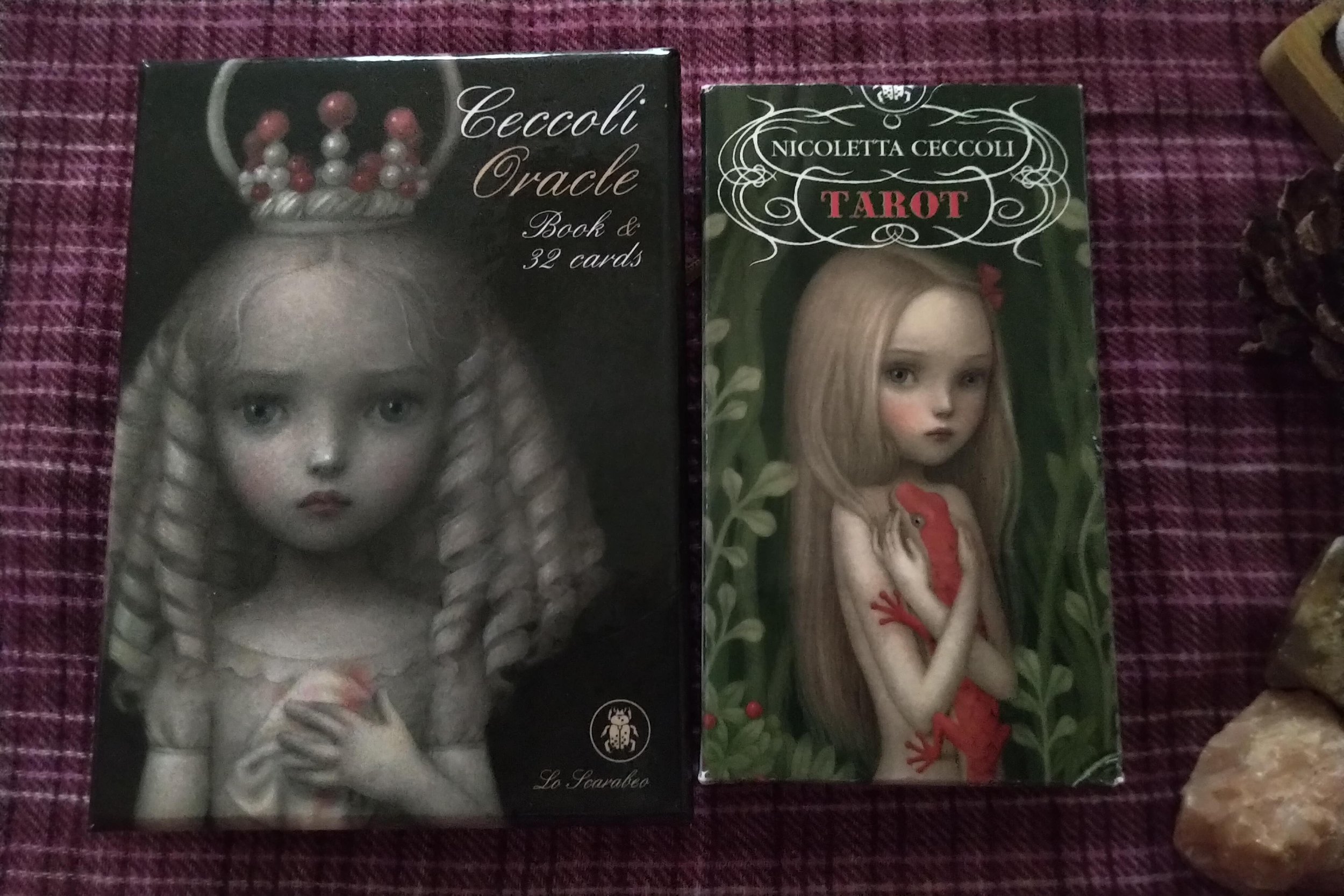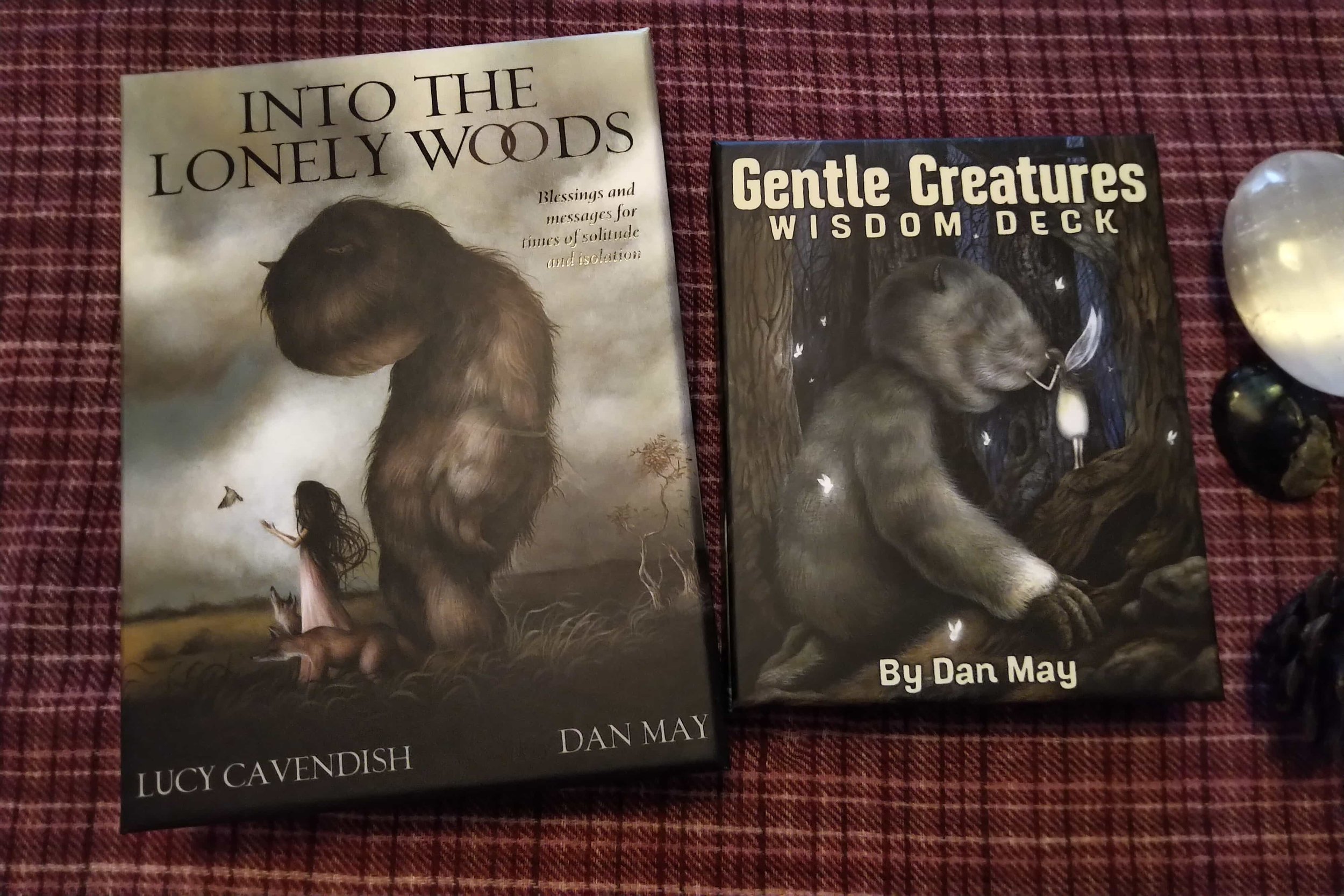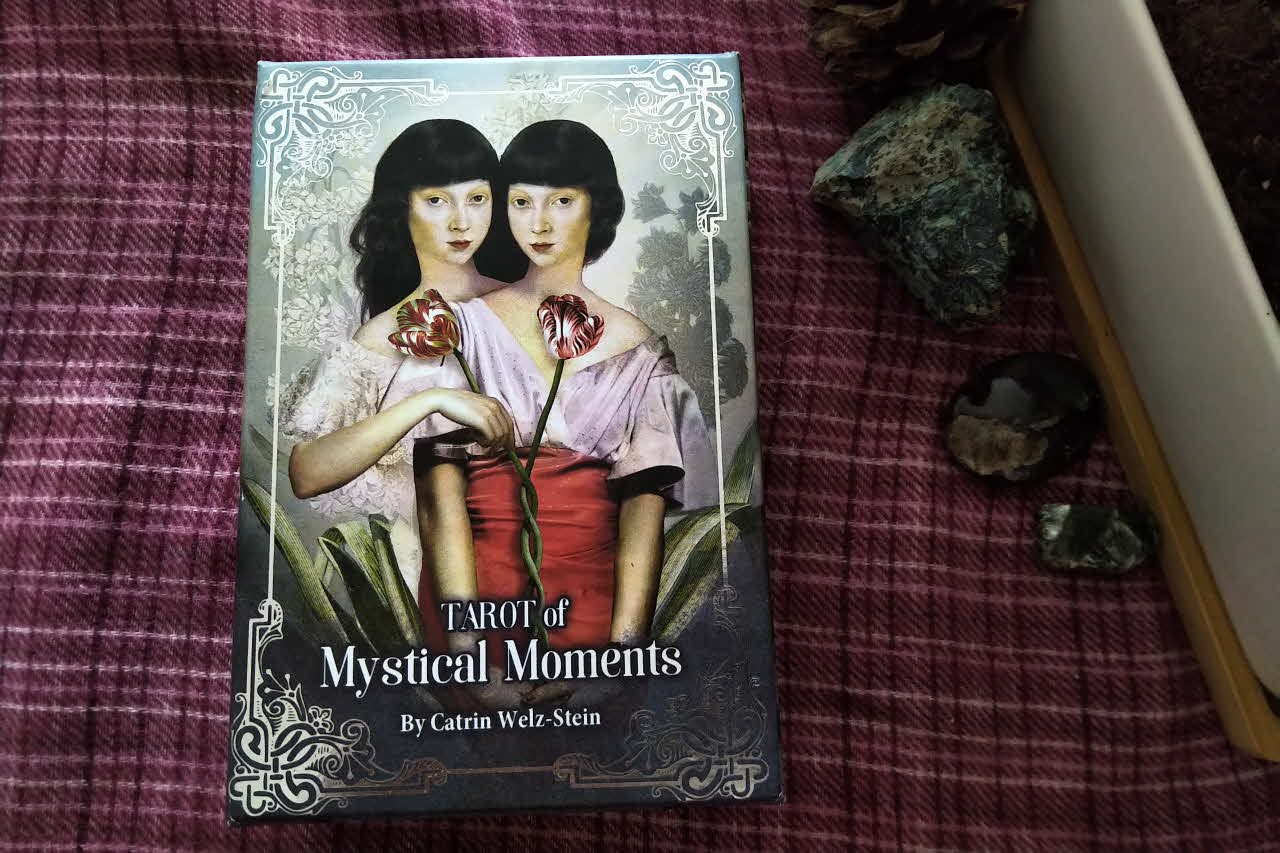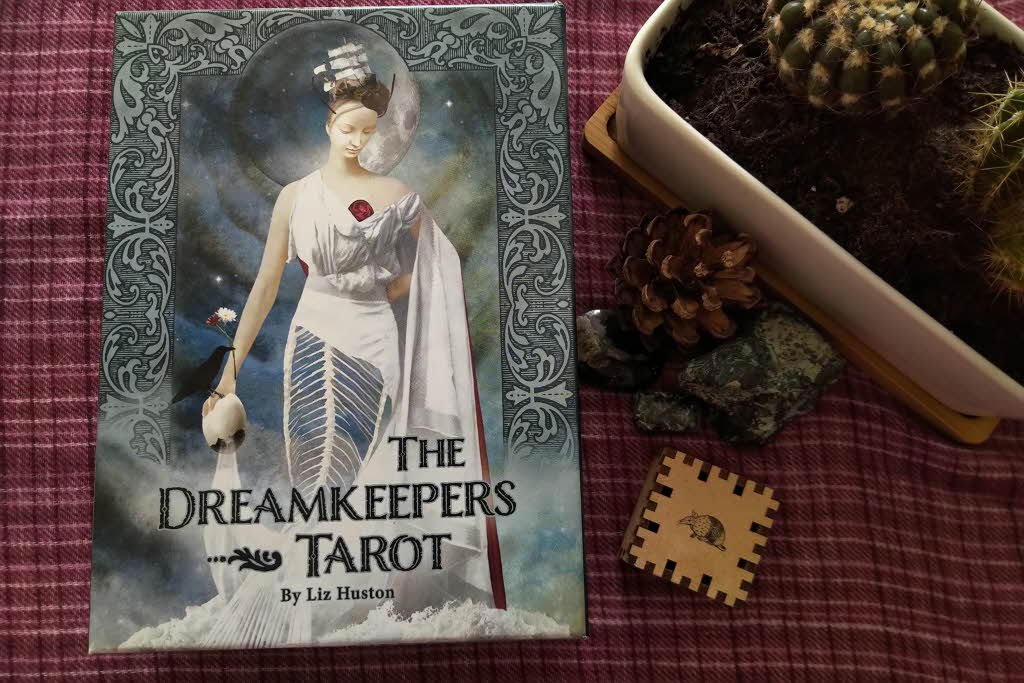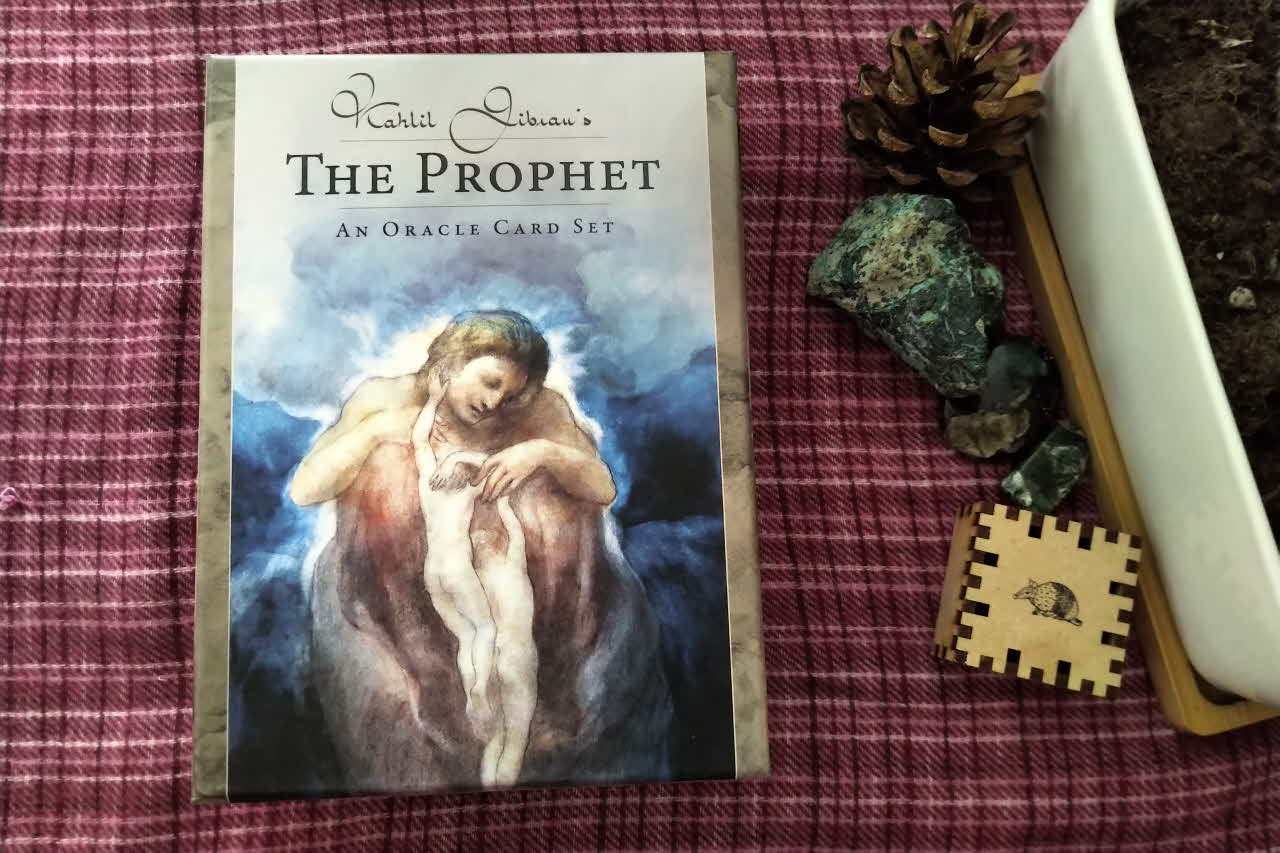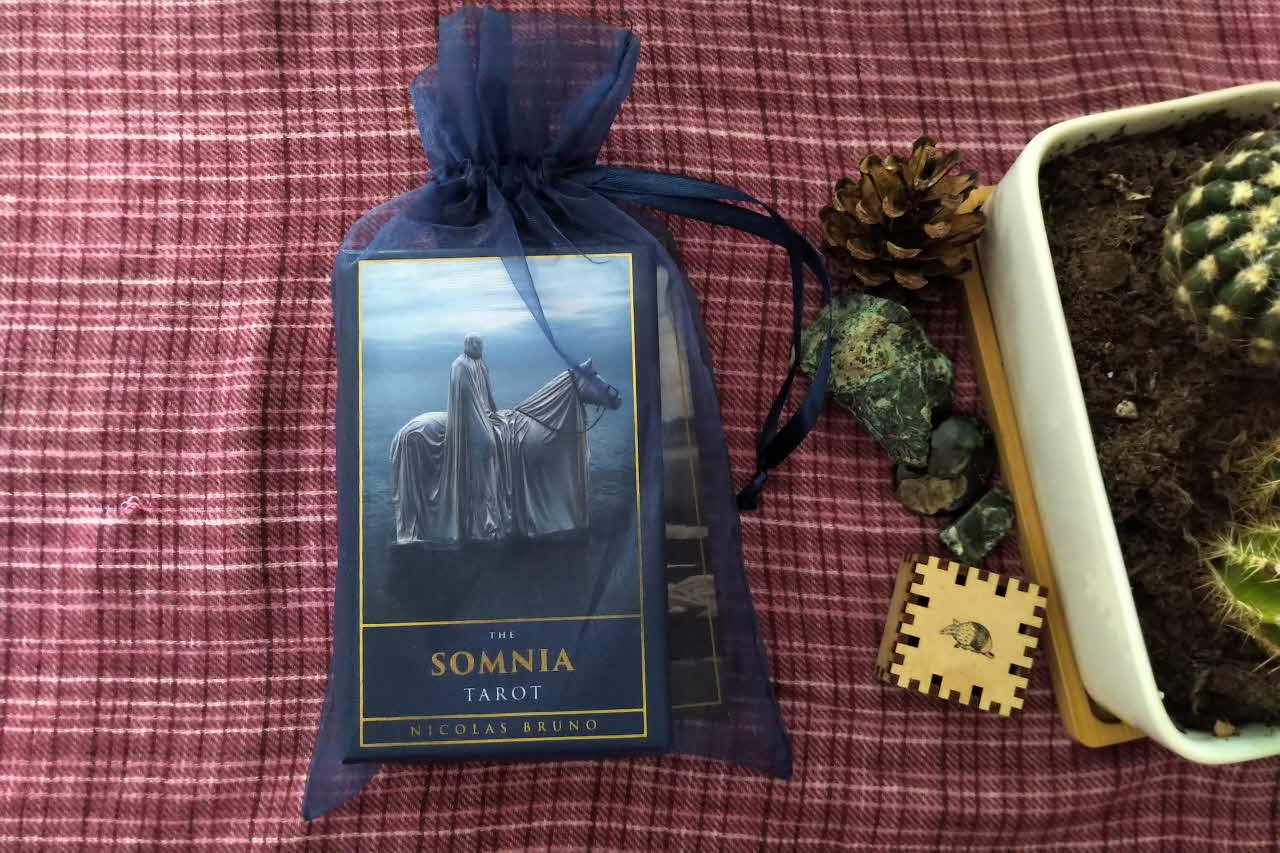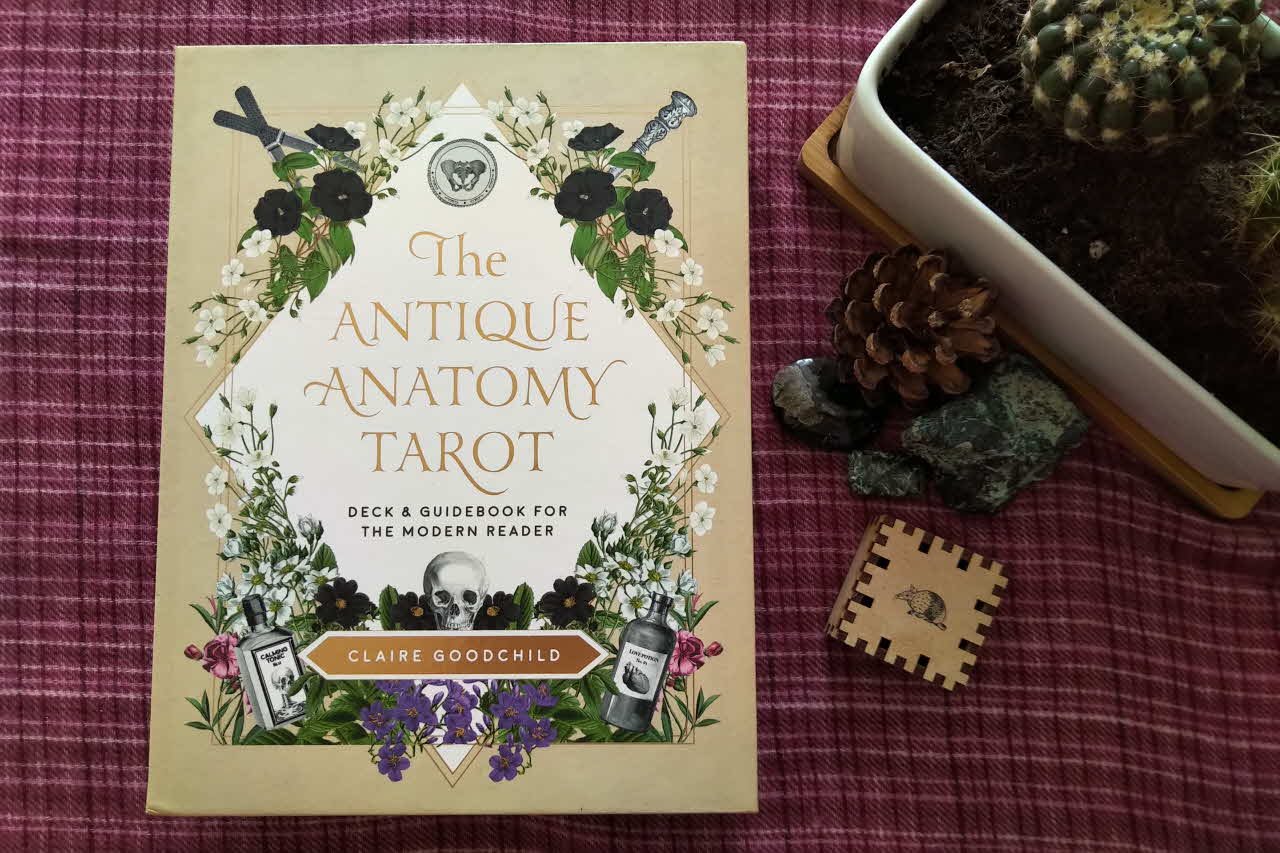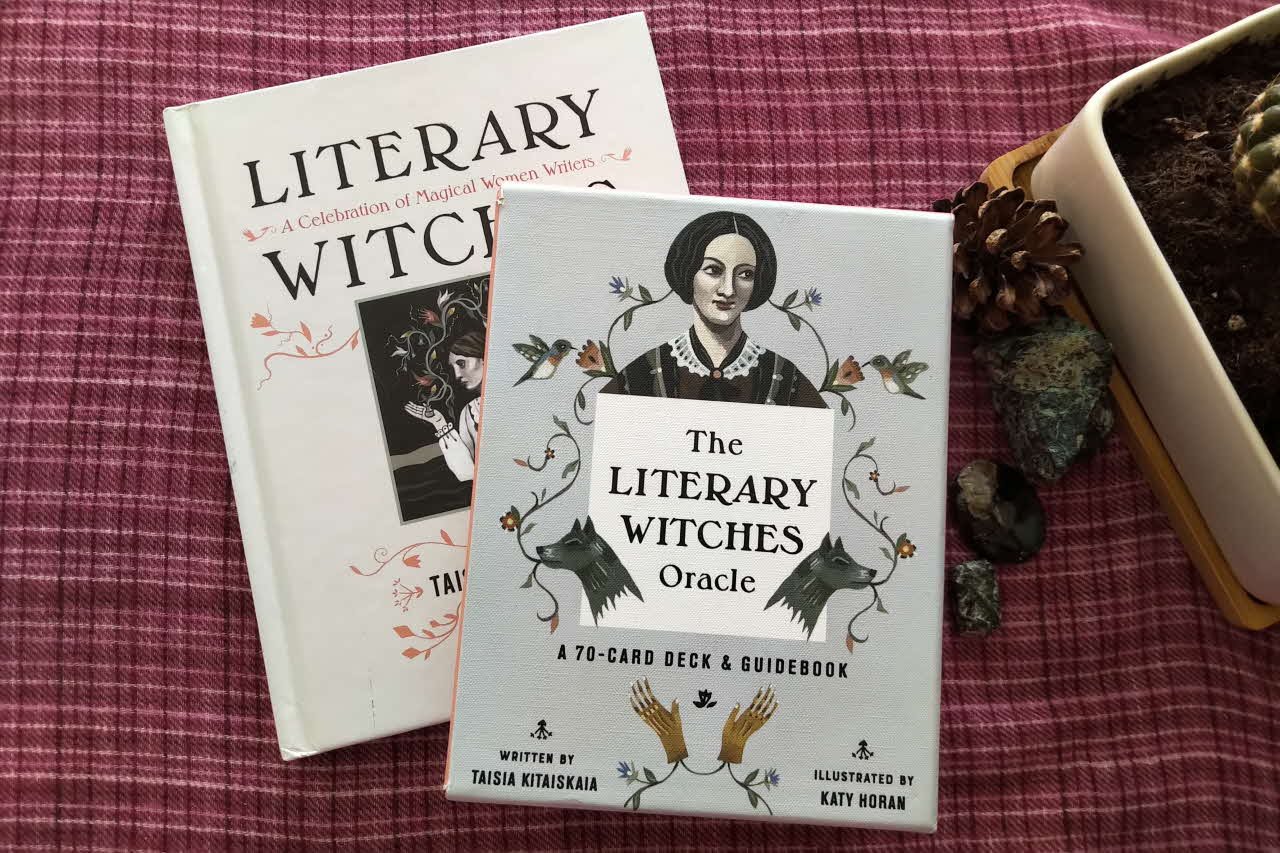The Harmonious Tarot

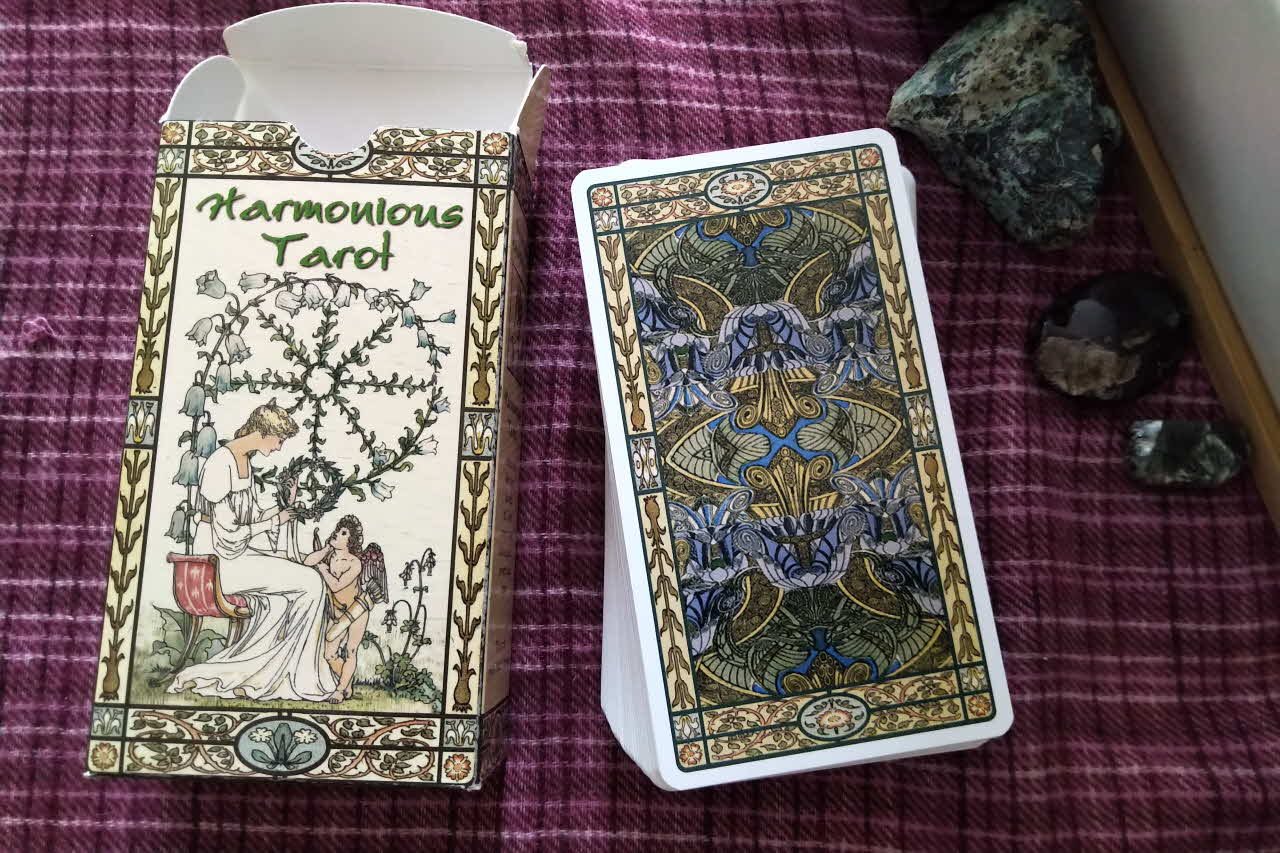
Created by Walter Crane and Ernest Fitzpatrick in 2005, The Harmonious Tarot has strong Victorian-style artwork that is surprisingly feminine. The colour palette is soft, emphasising pastel shades and the minimal use of black. The imagery doesn’t always conform to traditional expression and leaves it open enough to impose your own meanings. This makes it a great deck for experienced readers who are looking for a change from their currently established deck without having to adjust interpretations too much. I love the artwork, but it doesn’t intrude on intuition — that’ll make sense to those familiar with the craft. The Harmonious Tarot is by far the best deck I’ve come across recently that is suitable for general readings and regular use. As with other Lo Scarabeo decks, the cards are a great size for smaller hands, and the card stock makes for easy shuffling without them clinging together. The vibe from the cards is soft and unobtrusive. It comes with the typical white booklet that doesn’t contain very much information, but the imagery is pretty consistent in its offering of visual cues.
Major Arcana
For The Lovers, the booklet gives Harmony, union, sincere love. Beauty. New relationships. Associations. The image shows a man standing with a woman on either side of him and some kind of angelic presence overhead. There is some disparity between the booklet and the image because I find the image more descriptive of a situation where a choice needs to be made. It may well be symbolic of a choice between sacred and profane love — usually a battle between the heart and the genitals with the mind not really understanding the more primitive urges arising from the body. In The Chariot, we have a man and a woman in a horse-drawn chariot waving to those behind them. A young angelic male rides one of the horses, and a castle can be seen in the distance. From the booklet — Glory, triumph. Dynamism, will, future news and surprises. Success and money. I find the image strong in its suggestion of moving on to better times. I might’ve missed the cue of news and surprises if I hadn’t spotted the angel wings on the boy. I like the card because it shows happiness at what is being left behind — it infers a lack of regret over the choices made, and also companionship or at least feeling complete within the self.
From the booklet for The Hermit — Introspection, wisdom, prudence, isolation. Modesty, humility. Foresight. You don’t often see The Hermit in a prayer position, and I find this deeply symbolic of looking for answers from a more authoritative source. The moon's presence suggests that intuition is trying to clarify answers, and we can even see a book and a torch. It almost feels like this dude is ignoring what he already knows and feels clueless as a result. This card could indicate a need to trust in the self more, or perhaps there’s a spiritual solution to a mundane problem.
The Hanged Man looks like he was caught unaware and dangles from a tree with his foot caught in a trap. From the booklet — Stalled situation. Difficult tests and sacrifices. Postponed decisions. Reflection. I’m tempted to say someone wasn’t looking where they were going and seems to have trouble accepting they’re in the predicament they’ve found themselves in. What’s needed here is calm and, yes, reflection. Core strength will be required to get free of the situation.
With The Death card, the image is actually quite light-hearted, with Death dressed in a harlequinesque costume and mask with a dark cloaked figure behind him. The sand timer in his hand suggests time is either running out, or maybe it already has. The booklet gives: Radical transformation, change. New beginning, end of a love. The box of jewels on the floor and a discarded crown appear to offer riches of some kind; this suggests there will be some good to come from whatever is ending.
The Knights
I’ve included all four knights as I did with the Dark Grimoire Tarot. As you can see, there are subtle differences between them. From the booklet — Impetuous force, creativity. Resistance, courage. Brave man. The Knight of Swords is visibly active; our knight is poised with his sword aloft as he gives an almost cheeky glance over his right shoulder. But does this mean he risks not looking where he’s going? The horse is reared up on its hind legs with its front legs poised over the edge of what looks like a cliff face, so maybe the horse is about to take a leap. There’s a suggestion of daring and disregard for caution.
The Knight of Wands has more composure; the legs of the horse still indicate movement, but unlike the Knight of Swords, this knight is looking straight ahead — he knows where he’s headed, and he’s not taking his eye off his destination. He looks more focused, almost regal in his composure. The horse’s head faces down in what looks like a display of determination. From the booklet — Departure. A goodbye. Impatience, unrest. Impulsiveness. I think the departure message of the card might be more likely if this card showed up alongside Death or the three of swords. Relying on imagery alone, it’s difficult to see the goodbye unless you read into the fact the Knight is looking off into the distance.
The Knight of Pentacles is traditionally the slowest of the bunch. The Harmonious Tarot stays close to that, showing the horse at an apparent standstill — it looks like the horse has stopped to appreciate the flower under its nose. Curiously, this Knight is the only one out of the four not to be holding a shield. Is there a reference here to a lack of defensiveness? Or maybe he’s not as guarded as the others? Instead, his left-hand holds a rein loosely wrapped around the horse’s neck; we could have a symbolic reference to a person who has their movements and actions under control. The booklet says — Stability. Perseverance in choices, lucky encounters — all of which can be seen in the imagery.
For the Knight of Cups, we’re shown the back of the horse and its heading toward a castle that can be seen in the distance. To be shown the back end, we might assume whatever situation is being referred to is already well underway — this is not the beginning of something; it’s suggesting the progress of something or someone who has already made a decision to move forward in a set direction. The Knight holds his cup high and leans back on his horse. Is he drunk or just comfortable assuming that the horse knows the way? From the booklet — Future love. New friendships and acquaintances. A wedding proposal. There’s certainly a strong sense of someone offering something of an emotional nature with the way he’s holding that cup so high.
Minor Arcana
The ace of pentacles looks very goddess-like, and certainly emphasies the earthy, fertile aspect of the card meaning. The four of pentacles captures the hoarding and greed element so commonly associated with this card. The booklet says — Possession, power, materiality, meanness. The way the money is piled up on the floor and the unbalanced scale says it all really. The man looks very formal in his suit and tie, and the shield in the background all point towards one’s outer status being significant. The five of pentacles is more ambiguous in its representation and difficult to read. The booklet says — Poverty, worries, failure, loss of money. The imagery shows three females being blown heavily by the wind. This is suggestive of bad or adverse conditions and maybe implies forces outside of one’s own control. I find the seven of pentacles difficult to read. The artwork shows a man blowing some type of horn. His legs morph into the grass, and he looks like an earth-bound version of a mermaid. The ground behind him looks like waves. It’s very watery, is what I’m trying to say. The booklet gives the keywords of Wait, patience and maturity. I don’t mind admitting I’m lost. It’s a nice picture; I’m just not seeing the relevance. The ten of pentacles shows a man and a woman at the entrance to the grounds of a castle. I like this visual description, and I note the couple are dressed in comfortable, relaxed-looking clothing. This is in sharp contrast to the formality shown in the four of pentacles.
The ace of swords evokes the feeling of movement, and I like that the sword appears to be flying in the air above the woman. It’s a good indication of clarity of thought. Do her angel wings suggest innocence or purity of thought? Her stance gives the impression she is walking briskly, or is she being blown along by a wind? The four of swords gives a clear indication it is time for some much-needed rest and relaxation. The booklet gives — Immobility, solitude, isolation, reflection, and the imagery is in agreement for the most part with two females resting on a plant. The eight of swords shows a man reclining on the ground with another bending over him whilst placing a reassuring hand on his shoulder. From the booklet: Bad news, imprisonment, abandonment, solitude, pain. I like the card's imagery, but I don’t feel it shows the solitude aspect of interpretation nor the mental anguish that typically occurs in waking life when this card is in play. In the ten of swords, we see two female figures tending to an androgynous figure laid on the ground. The booklet says — Cruelty, separation, physical and spiritual death. Natural end of things. I can’t decide if the females look more like nurses or handmaidens; maybe it doesn’t matter. If you rely on visual cues more than the booklet, they’re certainly caring for him, which could suggest support during a crisis. Once again, I feel there’s a fair bit of disparity between the interpretation and the imagery.
In the two of cups, we see the adoration between the male and female that is typical of this card. The wings on his back suggest he’s heaven-sent, and this message is reinforced by the presence of an angelic being overhead. The booklet gives Love, union, encounter. Couple. New alliances. The picture is so cheesy you’d be hard-pushed not to see the romance of some description. I love the look of the seven of cups in this deck. The seven cups are strategically placed at the top of the picture space, each containing something different. Underneath, we find a male figure holding up a mirror for a woman. Sitting back to back, she looks over her shoulder and sees an old woman reflecting in the mirror. From the booklet — Sensitivity, reflection, dreams. Fantasies, illusions. Choices abound, and there’s a snake in amongst them. Is she looking ahead to when she’ll be older and wiser or is it symbolic of not seeing things clearly? Interesting to note it’s the bloke holding up the mirror for her — a painfully common occurrence when this card appears in a reading is the mirroring between two people. The nine of cups is another favourite, but I’m fearful for the goose walking beside a chef-like man with a spoon in his hand. Two females follow behind, carrying trays of some sort of loveliness. From the booklet — Success, well-being, gladness. Well, he certainly got the goose, and there’s plenty of abundance. But like I already said — I’m fearful for the goose. Does he need to cook it and eat it to enjoy it?
The ace of wands has a more calming image that the ace of swords.The woman appears relaxed as she stretches out a floral garland behind her back. Traditionally, it’s a card representing new ways of being, divine inspiration, or new creative adventures. In this deck the booklet says, Courage, energy, growth and fertility. I don’t feel any of those things from the card, but I do think she looks comfortable in her own skin, and very relaxed. The four of wands displays two males, each securing a wand into the ground. From the booklet — Celebrations. Harmony, good relations with relatives and friends. I love that the artist stresses this card as one of happy times and teamwork without overemphasising the relationship aspect. It can often represent a happy home life, but in the sense that life is meaningful rather than it being picture-perfect. The eight of wands is one of the most curious cards of the deck, and I’m intrigued by the suggestion of unwanted advances displayed by the female pulling away from a male who appears to want to display his affection. The booklet says — Ideas, thoughts, verbal and written communications. A surprise. She is definitely pulling away; this might be one of those cards that can only be read with a clarifier. I mean, we’ve all been there, so we know it’s going to be relevant to someone at some point. . . but it’s the eight of wands. . . curious indeed!
The Harmonious Tarot is lazy days in a garden full of flowers — all I have is a concrete yard, which may be one reason I’m drawn to it. I do like this deck. It’s lovely to use if you want to keep the vibe light in a sunny afternoon sense. Overall, I had the most trouble with the suit of wands, but others may not find this to be the case. I feel it’s suitable for beginners with a little patience and dedication because it doesn’t wander too far from traditional meanings. Although a handful of the cards are very challenging to read. I don’t think it falls into the collection category because it feels like a deck that wants to be used more than it wants to be looked at. That’s not to say collector decks don’t want to be used — on the contrary, the ones I list as having collector potential are those you fall into using for months on end and normally reflect an identifiable chapter in life. Or maybe that’s just me, I dunno, I’m rambling . . .and I think I just contradicted myself. Maybe this deck will be significant for someone — I can’t recall a chapter of sunny afternoons in my life, and maybe that’s why I’m not giving this deck more credit. There is some inconsistency between the booklet and the imagery, so I’d probably recommend ignoring the booklet for the most part. The artwork holds enough surprises to make this an interesting read.
